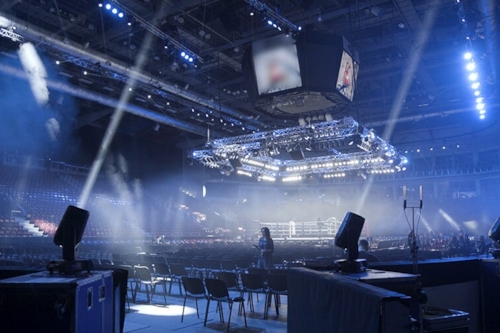
CO2 Performance Ladder certification – Versions 3.1 and 4.0
Receive a quote tailored to your needs
The CO2 Performance Ladder is the leading sustainability instrument that encourages organizations to structurally reduce their CO2 emissions. Companies that demonstrably work on CO2 reduction and obtain a CO2 Awareness (Dutch: CO2 Bewust) certificate benefit from competitive advantages in tenders and strengthen their sustainable image. With version 4.0, the CO2 Performance Ladder has been updated and made future-proof, with greater emphasis on climate transition, supply chain collaboration and transparency.
What is the CO2 Performance Ladder?
The CO2 Performance Ladder makes the reduction of greenhouse gas emissions measurable, visible and strategic. Organizations map their energy consumption and CO2 emissions, set reduction targets and communicate about them transparently. Dutch public contracting authorities such as ProRail, Rijkswaterstaat, municipalities and provinces use the Ladder in their tendering procedures: the higher the performance level, the greater the award advantage. The CO2 Performance Ladder stimulates insight into energy use and emissions, action through reduction plans, cooperation across the chain and sector and transparency in communication and social engagement.
What are the benefits of CO2 certification?
- Competitive advantage in tenders (EMVI)
- More efficient operations through energy savings
- Stronger image among customers and stakeholders
- Demonstrable contribution to climate goals
- Continuous improvement through annual audits
- Social value creation through chain collaboration
Transition from version 3.1 to version 4.0
Organizations can be certified according to version 3.1 until 14 January 2027. Eventually, every certified organization must transition to CO2 Performance Ladder version 4.0. Kiwa is recognized by the Foundation for Climate-Friendly Procurement and Business (Dutch: Stichting Klimaatvriendelijk Aanbesteden & Ondernemen, SKAO) and accredited by the Dutch accreditation council RvA for both versions and actively supports organizations in this transition and their preparation for it. Below is an overview of the main milestones in the transition from version 3.1 to version 4.0.
- 14 January 2025: Publication of Handbook 4.0
- 14 July 2025: Certification according to version 4.0 possible
- Until 14 January 2027: Certification based on version 3.1 allowed
- From 15 January 2027: Certification only according to version 4.0
Key differences between versions 3.1 and 4.0
|
Aspect |
Version 3.1 |
Version 4.0 |
|
Structure |
5 levels (1–5 |
3 steps (1–3) – Step 4 in development |
|
Focus |
Internal reduction and chain initiatives |
Climate transition in the short, medium and long term |
|
Transparency |
Internal reporting |
External communication mandatory |
|
Certification |
Fixed requirements per level |
More context-based and flexible |
|
Application |
Operations and projects |
Also chain, sector and social impact |
|
Scope |
Focus on Scope 1 and 2 |
Full integration of Scopes 1, 2 and 3 |
Structure of CO2 Performance Ladder version 4.0
Version 3.1 consists of five levels, ranging from insight into one’s own CO2 emissions (level 1) to advanced chain reduction (level 5). Version 4.0 works with three steps (and a fourth in development):
- Step 1 – CO2 reduction within the organization (comparable to level 3 of version 3.1)
- Step 2 – CO2 reduction in the supply chain and a 5–10-year climate transition plan
- Step 3 – Pathway to net-zero emissions by 2050, with measurable social impact
- Step 4 (in development) – Pioneers aiming to reach net-zero emissions demonstrably before 2050
What is measured in Scopes 1, 2 and 3?
- Scope 1: Direct emissions from owned or controlled sources (e.g. gas consumption, company vehicles)
- Scope 2: Indirect emissions from purchased energy (e.g. electricity)
- Scope 3: Other indirect emissions within the value chain (e.g. transport, procurement, waste)
Version 4.0 integrates Scope 3 more explicitly into the assessment, particularly from Step 2 onward.
Certification process in short
Application and consultation
Proposal and agreement
Audit phase 1
Audit phase 2
Certification decision
Surveillance audits
Why certify with Kiwa?
Kiwa is recognized by the Dutch foundation for climate-friendly procurement and business SKAO and accredited by the Dutch accreditation council (RvA). We offer certification according to both version 3.1 and the latest version 4.0 of the CO2 Performance Ladder. Thanks to our extensive experience in audits, CSR programs, energy management and ISO 14001 integration, we provide a pragmatic approach focused on feasibility. In addition, we operate an international Sustainability platform where knowledge and innovation are continuously shared. Your organization can also be listed in the register of certified companies. Kiwa plays a leading role in implementing version 4.0 and was among the first certification bodies to be accredited for this new version.
CSR Performance Ladder
Corporate Social Responsibility (CSR) is becoming increasingly crucial in response to growing demands from society and government for businesses to be conscious of the impact of their activities on people, the environment, and operations.

Performance ladder Circular
The Performance Ladder Circular is developed for companies that provide sustainable management of resources and raw materials to provide their products and/or services.

ISO 14001 Environmental Management
ISO 14001 Environmental Management Certification with Kiwa: reduce waste, gain customer trust and be competitive.

ISO 20121 Sustainable event management
The ISO 20121 standard helps event managers, caterers, logistics service providers and other parties involved in organizing an event to identify and prevent potential negative effects at an early stage.

VSME Verification: building trust in your sustainability reporting
With VSME verification, Kiwa provides independent assessment of sustainability reports prepared in accordance with the VSME standard. This strengthens the reliability, transparency and comparability of your sustainability information towards supply chain partners, regulators, financial institutions and internal stakeholders. VSME verification also helps you substantiate sustainability data with objective assurance, an important step towards formal ESG verification or certification.
